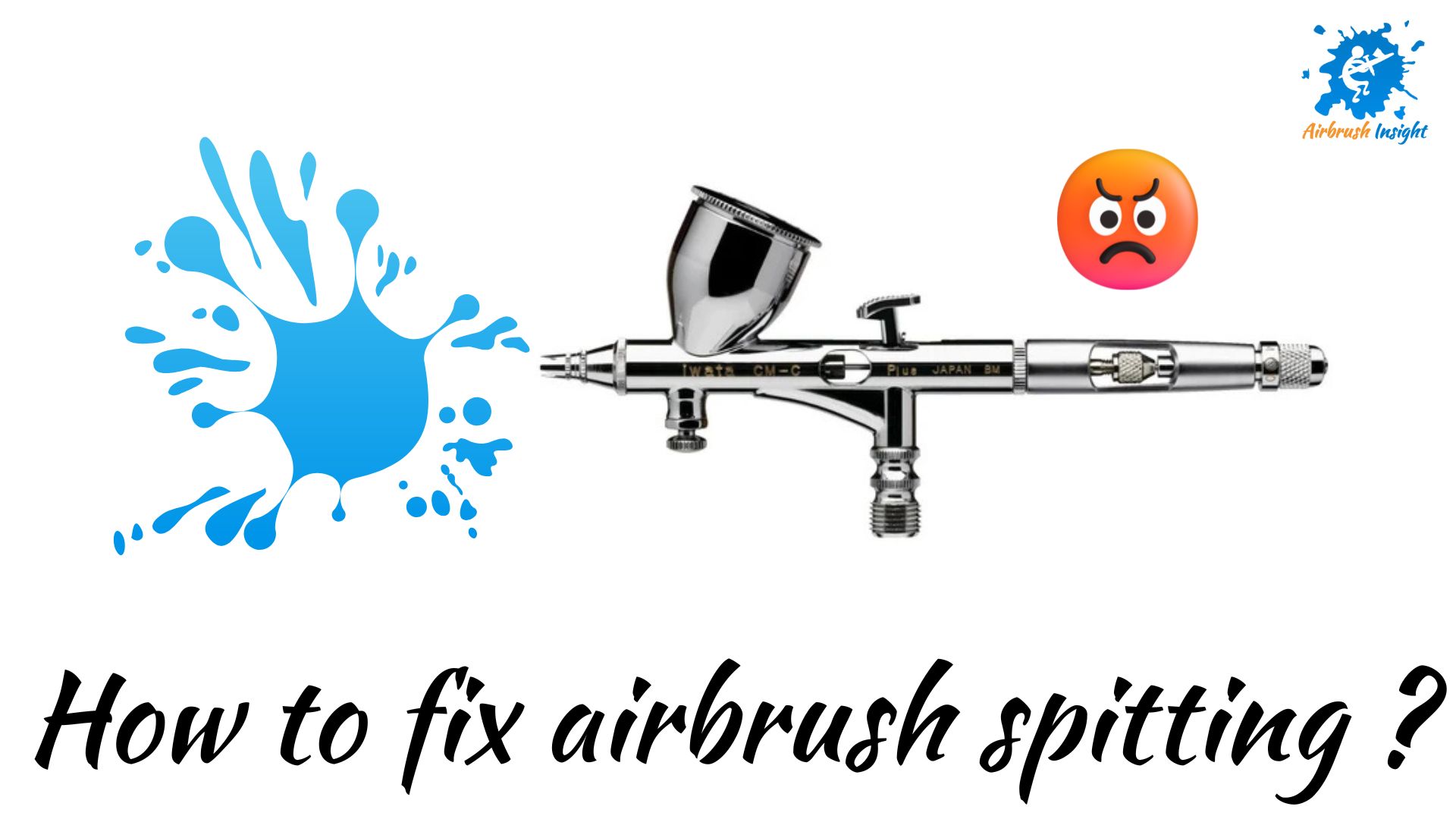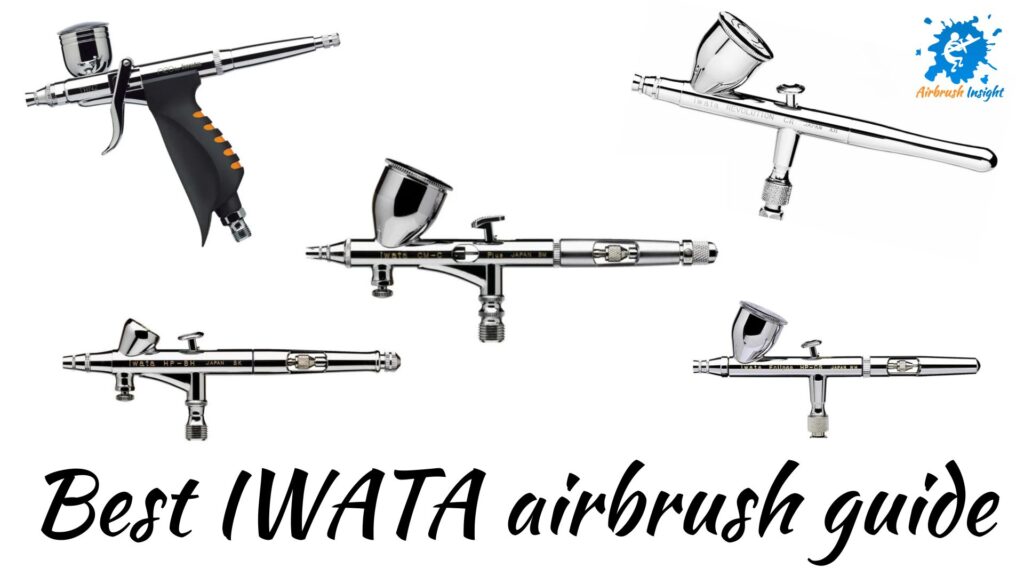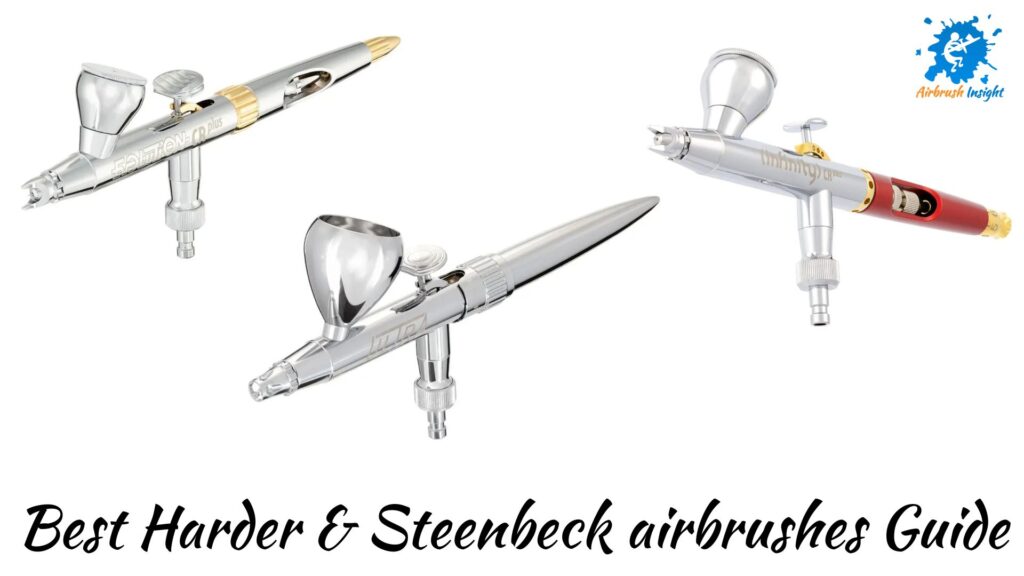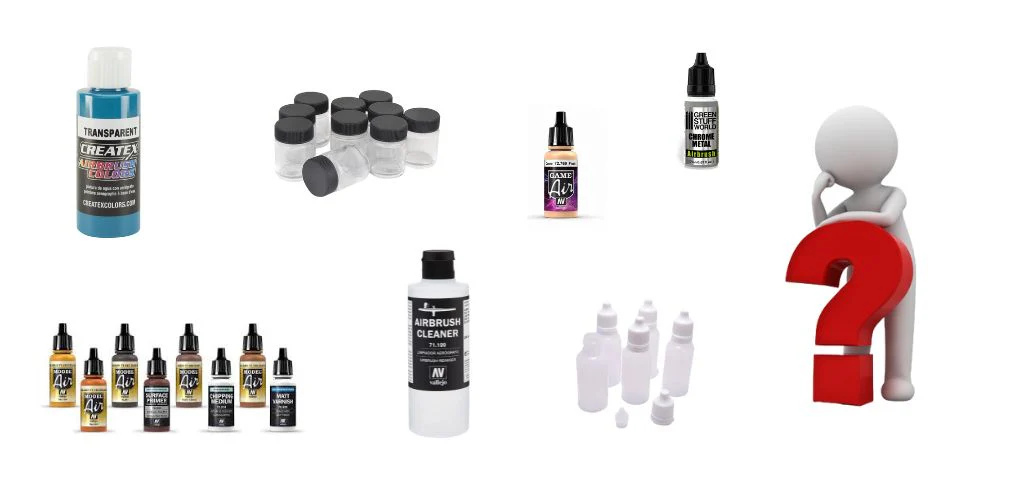
You finally choose the best airbrush and you want to start painting, but there’s a problem: your airbrush is spitting. It’s a frustrating and annoying issue for any airbrush user.
In this article, we’ll explain why your airbrush might be spitting and give you practical tips to fix it so you can fully enjoy using your airbrush.
Main causes of a spitting or clogged airbrush:
- Incorrect paint thinning ratio
- Inaccurate air pressure setting
- Moisture buildup from the compressor
- Damage to the airbrush
- Improper maintenance or use of the airbrush
Why the airbrush is spitting in the first place ?
I’ve personally faced this issue, staring at my setup and wondering why my FENGDA 183K airbrush was spitting.
…I didn’t realize it was all due to operator error in one form or another…
After extensive research and trying different “solutions”, I identified the following factors that can cause your airbrush to spit:
Low Air Pressure
If the air pressure coming from your compressor is too low, your airbrush won’t atomize the paint properly. Instead of a fine mist, you’ll get splattering and droplets.
With too much pressure, the paint droplets will scatter uncontrollably. You need to lower the pressure until you no longer see these droplets. You can read our guide to adjust the pressure on an airbrush compressor and discover the selection of best airbrush compressor here.
Paint Not Thin Enough
If your paint is too thick, it won’t atomize properly at a given pressure, resulting in paint splattering.
You could try increasing the pressure to reduce splatter, but higher pressure isn’t always helpful. In some cases, it can even negatively affect your paintwork.
Keep in mind that some compressors can’t deliver higher pressure, so thinning your paint may be the only solution.
Not Completing the Trigger Movement
This applies to dual-action airbrushes that control airflow and paint volume.
When you finish spraying, residual paint may remain around the nozzle or needle tip. Pressing the trigger for air only (without paint) at the end of your session helps to blow out leftover paint, preventing dry buildup that can cause spraying issues later.
Dry Tip (Paint Drying on the Nozzle)
The tip of the airbrush can dry out when paint begins to dry too quickly before exiting the airbrush, especially with acrylics. This paint buildup accumulates on the needle tip.
This dried paint can result in irregular spraying or paint spots on your work surface.
Damaged Needle or Nozzle
If the needle or nozzle of your airbrush is damaged, many issues can occur: uneven paint application, inconsistent spray patterns, or even paint spitting and splattering.
Moisture in the Air Hose
Small water droplets in your paint line can ruin the quality of your painting session and cause spitting or splashing effects during spraying.
This happens because air compression naturally causes condensation of water vapor. You can reduce this issue by using a moisture trap or water filter.
Loose Fittings
If your fittings are not tight enough, air pressure can leak, creating a low-pressure environment inside the airbrush, no matter how powerful your compressor is.
As mentioned earlier, low pressure leads to poor paint quality and increases the risk of spitting. Make sure all connections are snug, but avoid over-tightening to prevent damage.
How to Stop Your Airbrush from Spitting Paint: What You Can Do
Here are a few actions you can take right now to fix an airbrush that spits paint or water during your painting sessions:
Solution #1: Increase Your Air Pressure
As we saw earlier, low pressure can cause paint spitting from your airbrush.
By increasing the air pressure, you improve paint atomization, and that alone may be enough to eliminate the spitting issue.
Solution #2: Empty Your Moisture Trap
First things first: empty your water trap.
Many people experience spitting even with a moisture trap installed. In most cases, the issue is that the trap is full.
Empty it regularly—even when it’s just a quarter full. The fuller it gets, the higher your chances of having spray issues. Keeping it empty at regular intervals can significantly reduce the problem.
Solution #3: Check That All Fittings Are Tight
Inspect all connections from the compressor outlet to the airbrush needle cap. Loose fittings or gaps allow pressure to escape and can cause low-pressure problems that lead to spitting.
Double-check all threaded parts. They should be tight—but not overtightened. Too much force could damage your fittings.
Solution #4: Quick Cleaning
If you’re still experiencing paint spitting after the first three solutions, it’s time for a quick clean-up.
You don’t need to remove the nozzle yet, but thoroughly clean the paint cup with an appropriate cleaner. Then clean the front of the needle cap, remove it, and clean the needle tip carefully.
Reassemble the airbrush and test it again to see if the issue has been resolved. You can read the best article to clean your airbrush here.
How to Prevent Your Airbrush from Spitting Paint: Long-Term Solutions
If the four quick fixes didn’t solve the issue, it’s time to use preventive strategies and examine deeper causes.
Solution #5: Deep Cleaning
This involves a complete deep cleaning of your airbrush: the paint cup (for gravity-feed airbrushes), the paint channel, full removal and cleaning of the needle and nozzle.
If needed, soak the nozzle and front section of the airbrush in a dedicated cleaner or thinner to loosen stubborn residue.
Don’t skip any detail. A poorly cleaned airbrush will continue to spit paint no matter what adjustments you make.
Solution #6: Use the Right Paints
The type of paint matters. If you’re not using paints designed for airbrush use, you may run into problems—unless you know how to thin them properly.
That said, properly thinned paint usually works well in any airbrush. To rule out paint issues, test with a paint you’ve successfully used before. If the problem disappears, your paint choice was the issue.
You can also use a paint retarder to slow drying inside the nozzle and reduce tip dry.
Solution #7: Adjust the Pressure-to-Thinning Ratio
There’s a strong relationship between paint dilution and air pressure in airbrushing. The more you dilute your paint, the lower the pressure you can use—and vice versa.
The goal is to thin the paint enough so you can spray at the lowest effective pressure without losing coverage or getting a transparent result.
If you’re getting splatters, you’re probably using too little pressure for the thickness of your paint. In that case, either thin the paint further or increase the pressure.
Getting the right ratio between dilution and pressure is something you’ll need to test with every new paint brand or type you use.
Solution #8: Check for Damaged Parts
If you’ve tried all the fixes so far and your airbrush is still spitting, you might be dealing with a bent needle or cracked nozzle.
Examine your needle and nozzle under magnification if possible. Look for cracks, bends, burrs, or any deformation.
If your needle tip is bent, look into a guide that shows you how to straighten and repair it so it performs almost like new.
Solution #9: Use a Moisture Trap on Your Airbrush or Compressor
As we mentioned earlier, water droplets from your compressor can ruin your paint job.
Though it may take a small investment, one of the most effective ways to prevent this is to install a moisture trap—either on the compressor itself or at the airbrush’s air inlet.
If you’re handy, you can install one yourself. Otherwise, consider upgrading to a compressor that comes with a built-in moisture trap.
Solution #10: Use a Compressor with an Air Tank
Another way to reduce moisture in your air supply is by using a compressor with an air tank. It’s an investment, but well worth it for frequent airbrush users.
The tank helps stabilize air pressure and creates an environment where moisture can settle out, reducing the risk of water droplets reaching your airbrush.
FAQ: Why Is My Airbrush Spitting Paint?
Why is my airbrush spitting water?
If your airbrush is spitting water, it’s likely due to moisture buildup in the air tank. To prevent this, use a water separator to filter out humidity. Having a separator directly on your compressor and purging it regularly helps prevent water from reaching your airbrush—and ultimately, your paint.
How do I know if my paint is properly thinned for airbrushing?
To check if your paint is well-thinned for airbrushing, do a spray test. Apply a small amount of paint to a test surface and see if it sprays smoothly and evenly, without splatter. If not, you probably need to thin the paint more. Here’s a full guide to learn how to thin your paint properly.
How can I clean my airbrush effectively?
To clean your airbrush effectively, use a dedicated airbrush cleaner or isopropyl alcohol—but be careful with rubber seals. Disassemble the airbrush and clean each part thoroughly, especially the hard-to-reach areas. Use specialized cleaning brushes for narrow passages.
Conclusion: Fixing Airbrush Spitting Problems
Spitting is an issue every airbrush user faces at some point. With a bit of luck, it’s as simple as adjusting your paint thinning or air pressure. But if not, this guide gives you a complete list of effective fixes and preventive tips to get your airbrush working smoothly again.



